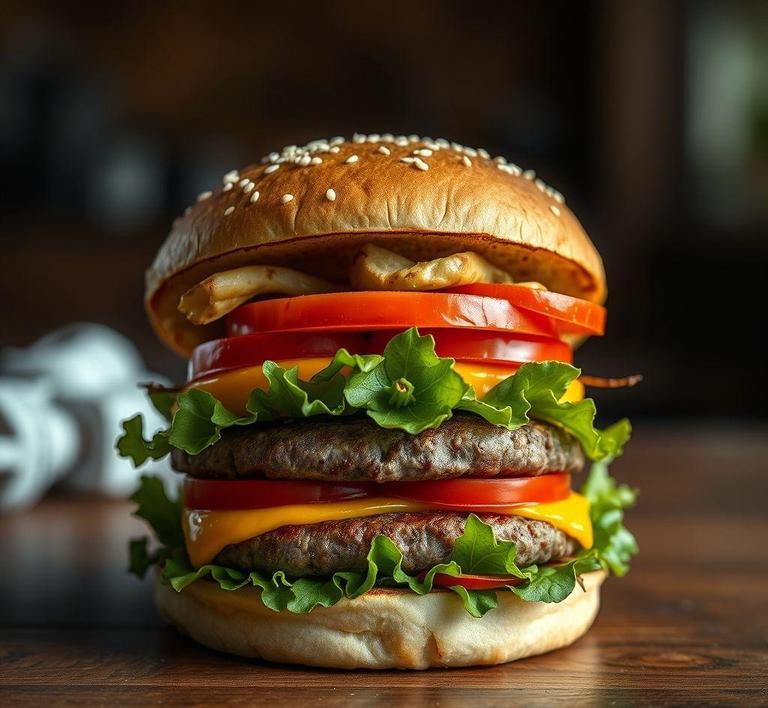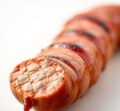Wondering if you can refreeze Beyond Burgers? You’re not alone! While plant-based patties like Beyond Burger are a convenient and delicious alternative to meat, it’s important to know the best way to store them, especially if you’ve bought them in bulk or have leftovers. Refreezing Beyond Burger can be a bit of a gray area since it affects the texture and taste, but with the right approach, it’s totally doable. In this guide, we’ll dive into the do’s and don’ts of refreezing Beyond Burgers, how to preserve their quality, and tips on making sure they taste just as good the second time around!
Can You Refreeze Beyond Burger?

When it comes to plant-based meat alternatives like Beyond Burger, the question of whether or not you can refreeze it is one that many people ask. The short answer is yes, you can refreeze Beyond Burger, but there are a few important nuances to consider.
Just like with traditional meat products, the process of freezing and refreezing Beyond Burger can have an impact on both its texture and flavor. The key factor to keep in mind is whether the Beyond Burger has been previously thawed or cooked. If it has been thawed but not cooked, refreezing is still possible, but it can affect the overall quality of the product. If it’s been cooked already, the refreezing process becomes slightly more complicated due to changes in moisture content and texture.
The general guideline to follow is that if the Beyond Burger was defrosted in the fridge, and you haven’t cooked it yet, it’s safe to refreeze. However, the situation becomes more delicate once it’s been cooked. Cooking alters the cell structure of the food, and when frozen again, the cells may not hold the same moisture, which could lead to a drier or tougher texture upon reheating.
Therefore, while it is safe to refreeze Beyond Burger, the decision should be made based on your priorities regarding texture and taste. If maintaining the highest possible quality is your goal, it might be best to avoid refreezing it if you’ve already cooked it or thawed it out for a while.
How To Refreeze Beyond Burger?
If you’ve decided to refreeze Beyond Burger, it’s important to follow a few best practices to ensure that you minimize any negative effects on the product’s texture and flavor.
-
Make Sure It’s Properly Thawed
- First, ensure that the Beyond Burger has been thawed safely. If you’ve bought it frozen, let it thaw in the refrigerator (never leave it out at room temperature for more than 2 hours). This ensures that bacteria don’t start to grow during the thawing process.
- Do not thaw Beyond Burger in the microwave or in hot water, as this can partially cook it, which would make the refreezing process more problematic.
-
Use Airtight Packaging
- When preparing to refreeze Beyond Burger, packaging plays a crucial role. If you want to preserve the taste and texture, wrap the Beyond Burger in airtight plastic wrap, aluminum foil, or a vacuum-sealed bag. Removing excess air from the packaging will help prevent freezer burn, which is a common issue when refreezing any kind of food, including plant-based meat.
- It’s also a good idea to divide the Beyond Burger into individual portions so you can defrost and use only what you need, without needing to thaw the entire batch each time.
-
Label And Date
- Make sure you label the packaging with the date it was frozen, and note if it’s been cooked. This will help you keep track of how long it has been in the freezer, and whether it’s safe to eat. Beyond Burger should ideally be consumed within 2-3 months of being refrozen to guarantee the best quality.
-
Freeze Promptly
- Don’t leave the Beyond Burger out too long once it has thawed. Refreezing it as soon as possible will prevent the growth of bacteria and will preserve the quality. The quicker you get it back into the freezer, the better.
-
Reheat Properly
- When it’s time to eat the refrozen Beyond Burger, take extra care to reheat it thoroughly to an internal temperature of 165°F (74°C). This ensures the burger is safe to eat and helps it maintain a pleasant texture. It’s a good idea to cook it gently, either in a pan or on a grill, as this can help retain its juiciness and prevent it from becoming too dry.
Quality Impact
Refreezing Beyond Burger, as mentioned, can have an impact on both its texture and flavor. These effects are primarily due to the changes that occur in the food’s cell structure when it is frozen and thawed multiple times. Here’s how the quality might be affected:
-
Texture Changes
- The texture of Beyond Burger may become softer or even mushy after refreezing. This happens because freezing forms ice crystals within the food, and when those ice crystals thaw, they can rupture the cell walls. The more times this happens, the more the burger may lose its firmness and become less “meaty”.
- If you’ve cooked the Beyond Burger before freezing it, expect more noticeable texture changes. The moisture loss from the cooking process means the burger will likely be drier when reheated, with a less satisfying mouthfeel than a freshly cooked patty.
-
Flavor Degradation
- Beyond Burger has a specific flavor profile that is created by a mix of plant-based proteins, fats, and spices. When frozen and thawed repeatedly, this flavor can diminish slightly, particularly if the product develops freezer burn. Freezer burn occurs when moisture evaporates from the food and is replaced by air, which causes it to lose flavor and develop off-tastes.
- However, Beyond Burger is generally less prone to freezer burn than some other foods because of its plant-based composition. Still, you should expect a slight flavor degradation after refreezing, especially if the burger has been thawed multiple times.
-
Nutritional Quality
- While refreezing Beyond Burger may not significantly affect its nutritional content, the breakdown of some of the fats and proteins over time could slightly alter the quality. However, the differences are usually minimal. If you refreeze it after cooking, though, the loss of moisture could affect the way your body digests and absorbs some nutrients, especially if the texture changes significantly.
-
Visual Appeal
- The aesthetic qualities of a refrozen Beyond Burger might suffer as well. The burger may appear a bit drier, discolored, or more crumbly when cooked again, making it less visually appealing than when freshly prepared.
Refreezing Beyond Burger is absolutely possible, but it comes with caveats. The quality of the burger may not be as high after refreezing, especially when it comes to texture, flavor, and moisture content. If you’re looking to maintain the best possible eating experience, it’s best to only freeze Beyond Burger once and consume it soon after thawing.
To ensure the best results when refreezing, be sure to handle the product properly-wrap it tightly, use airtight packaging, and label it with a date. Also, try to keep the refrozen Beyond Burger within the 2-3 month window to minimize quality loss.
While it may not be ideal to refreeze Beyond Burger multiple times, it’s certainly safe to do so if you need to. Just keep in mind that some minor quality loss is to be expected, and adjust your expectations accordingly.
Is It Safe To Refreeze Beyond Burger?
Refreezing Beyond Burger, or any plant-based meat alternative, is a topic that often causes concern for those trying to ensure both safety and quality in their meals. The short answer is yes, it is generally safe to refreeze Beyond Burger. However, there are some important considerations to keep in mind when deciding whether to do so.
Beyond Burger, made primarily from pea protein, can be treated much like traditional ground beef or other plant-based patties when it comes to freezing and refreezing. That said, it’s important to understand the process and its potential effects. The primary concern in the refreezing process is not necessarily the safety of the Beyond Burger, but the quality of the product. Each freeze-thaw cycle can cause a loss of texture and flavor, making the burger less appealing the second time around.
To safely refreeze Beyond Burger, ensure that it has been stored properly in the first instance. When you defrost it, it should be done in the refrigerator rather than at room temperature. This helps to prevent any bacterial growth. If the burger has been left out for more than two hours, it may no longer be safe to refreeze, and you should dispose of it to avoid any foodborne illnesses.
In terms of safety, there are no major risks unique to Beyond Burger in comparison to other foods. The main issue arises with the potential for food spoilage when the product is not handled correctly. As long as it has been kept at a safe temperature (either frozen or refrigerated), refreezing the Beyond Burger is fine.
Signs That Beyond Burger Should Not Be Refrozen
Even if it may technically be safe to refreeze Beyond Burger, there are signs to watch out for that suggest it should not be refrozen or consumed after thawing. These indicators often signal that the quality, safety, or both have been compromised:
- Off Smell: If the Beyond Burger emits any foul or sour odors, it’s a red flag. Fresh plant-based products should have a neutral or mild aroma. Any significant change in smell can suggest spoilage or bacterial growth.
- Color Changes: Beyond Burger typically has a pinkish-brown hue. If the color turns darker or develops any unusual discoloration, it might indicate that the product has gone bad. This is especially true if the burger has been thawed and stored for a prolonged period.
- Texture Changes: The texture of Beyond Burger is one of its defining features. If the burger becomes slimy or excessively mushy after thawing, that could be a sign that the cellular structure has broken down. This is more likely if the burger has been frozen and thawed repeatedly.
- Visible Mold: If you notice any mold or unusual spots on the burger, it should definitely not be refrozen or consumed. Mold growth is a clear sign that the food has been exposed to conditions conducive to bacterial growth or contamination.
- Excessive Water or Liquid: While some moisture release is normal when freezing and thawing plant-based products, a large amount of water pooling around the Beyond Burger is an indication that it has undergone excessive freezing and thawing cycles or wasn’t stored properly.
Common Refreezing Mistakes
When it comes to refreezing Beyond Burger, there are several common mistakes that people often make, which can reduce both the safety and the quality of the product. These mistakes may seem minor but can have a big impact:
- Thawing at Room Temperature: One of the biggest mistakes is thawing Beyond Burger at room temperature. When left out for more than two hours, bacteria can start to multiply, making the product unsafe to eat. It’s essential to thaw plant-based burgers in the refrigerator to keep them at a safe temperature and reduce the risk of bacterial growth.
- Refreezing Immediately After Thawing: It’s tempting to just throw the Beyond Burger back into the freezer as soon as you’re done cooking or when you don’t want to waste it. However, each time food goes through the freeze-thaw cycle, moisture is lost, leading to a deterioration in texture and flavor. Additionally, refreezing can increase the chances of microbial contamination, which is why it’s important to only refreeze the Beyond Burger once, if at all.
- Inadequate Packaging: Proper packaging is crucial when freezing or refreezing Beyond Burger. Wrapping the patties loosely or using inadequate materials can lead to freezer burn. This occurs when air gets to the food and dries it out, causing both texture and flavor issues. Always use airtight containers or vacuum-sealed bags to prevent exposure to air.
- Not Monitoring Storage Time: Freezing Beyond Burger for an extended period may negatively impact its taste and texture, even if it is refrozen properly. While plant-based meat can be stored frozen for several months, it’s best to consume it within two to three months for optimal quality. Longer storage may lead to a decline in flavor and moisture content, making the burger less enjoyable after refreezing.
- Not Checking Internal Temperature: If you do refreeze Beyond Burger, ensure it is cooked to the right temperature the first time around before putting it back in the freezer. Improper cooking or cooling can lead to uneven thawing later and may cause safety issues when reheating.
Tips And Tricks
If you decide to refreeze Beyond Burger or any plant-based meat, here are a few tips to help maintain its quality and safety:
- Flash Freeze for Better Texture: If you have several Beyond Burgers that you need to freeze, try flash freezing them first. Lay them out in a single layer on a baking sheet in the freezer for about 1-2 hours before transferring them into airtight bags. This prevents the patties from sticking together and helps retain their texture when thawed and refrozen.
- Use a Vacuum Sealer: Vacuum sealing your Beyond Burgers is one of the best ways to preserve their quality in the freezer. The lack of air prevents freezer burn and helps maintain the burger’s flavor and texture.
- Label and Date Your Packages: Always label frozen items with the date they were frozen. This will help you keep track of how long they’ve been stored and ensure you consume them within the optimal window for taste and safety.
- Thaw in the Refrigerator: As mentioned earlier, the safest way to thaw Beyond Burger is in the refrigerator. This allows the product to gradually come back to a safe temperature while minimizing the risk of bacteria growth.
- Use Within a Few Days of Thawing: Once thawed, plan to cook and consume your Beyond Burger within 1-2 days. If you don’t think you’ll use it in that time, consider cooking it and then freezing the cooked patties instead of refreezing raw patties. This can help retain some of the burger’s quality.
Conclusion
Refreezing Beyond Burger is safe when done correctly, but it comes with some potential trade-offs in terms of taste, texture, and quality. While it may not present unique safety risks, improper handling during the thawing and refreezing process can lead to undesirable changes in the product, including off smells, texture degradation, and even bacterial contamination.
To maintain both the safety and the quality of your Beyond Burger, ensure that you are following best practices when freezing, thawing, and storing the product. Avoid common mistakes like thawing at room temperature or refreezing it multiple times. Always check for signs of spoilage before deciding to refreeze and make use of storage solutions like vacuum sealing to preserve its freshness for longer.


